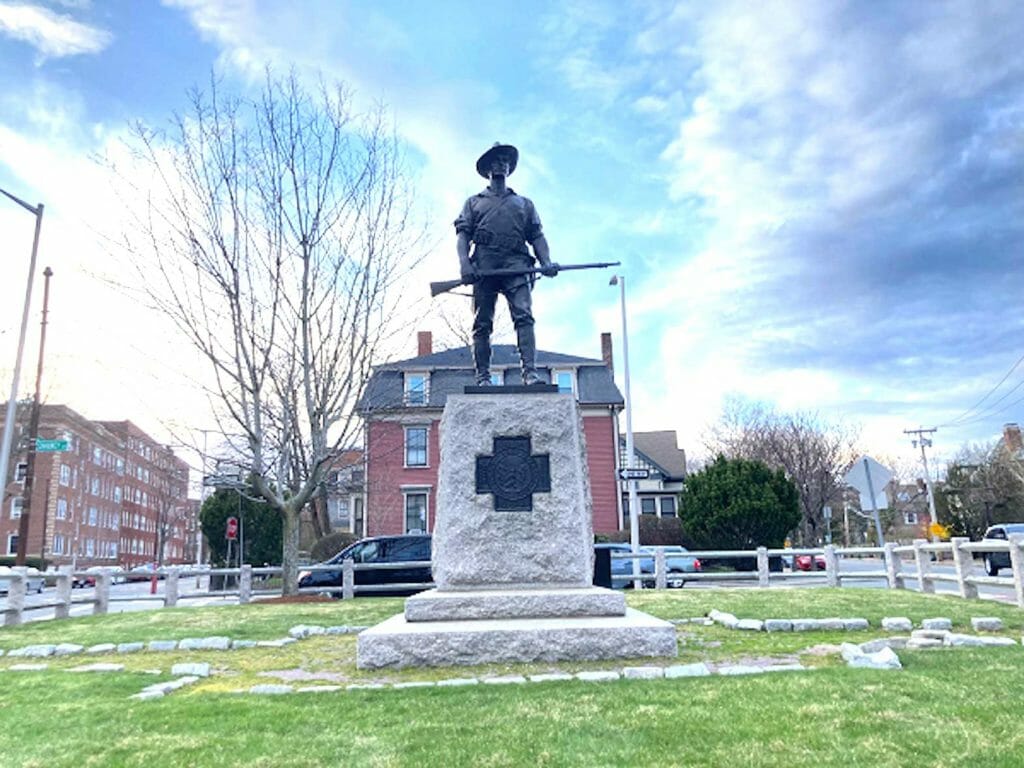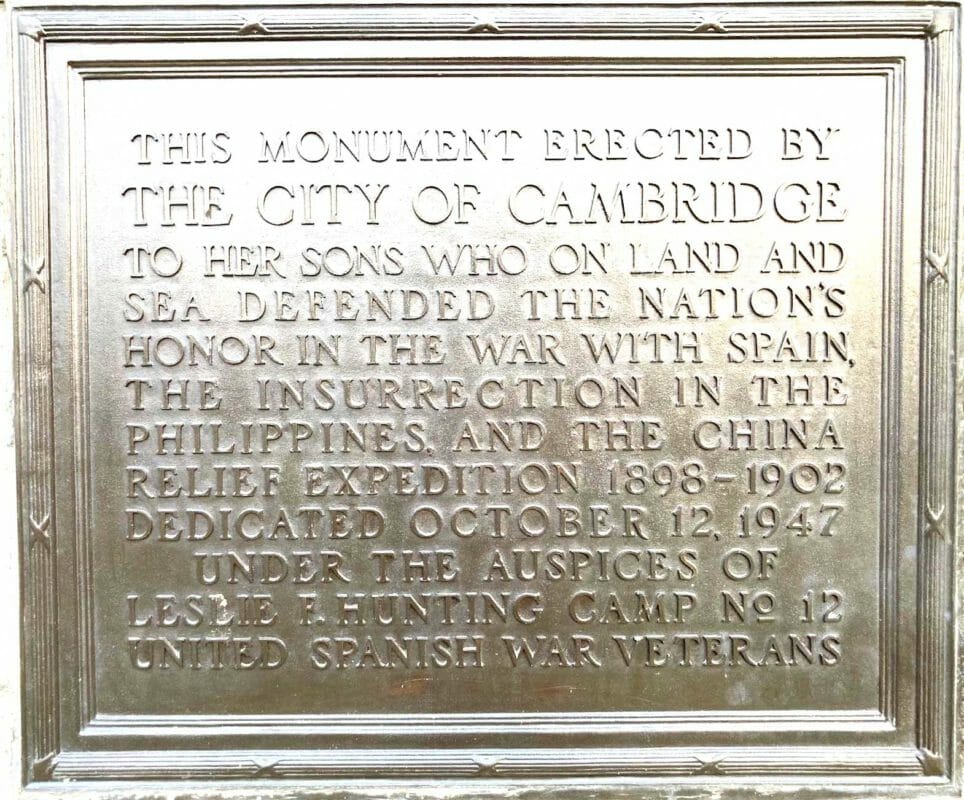Harvard monument glorifies U.S. colonial rule over PH

‘The Hiker’ monument: Should the Fil-Am community call for its removal? THE FILAM
For many people, what puts Cambridge, Massachusetts, on the map is that it is the city where Harvard and MIT are located. As a Filipino student at Harvard, I can also say that there are not many Filipinos in this part of the country.
As I walk from my dorm in the Radcliffe Quadrangle to my classes at Harvard Yard, I always pass by The Hiker, an 18-feet and 5-inch tall monument of a soldier. With his right foot forward, the soldier is on a pedestal armed with a rifle that he clutches with both of his hands.
On the front of his pedestal is a bronze marker in the shape of a cross. The top of the cross says “CUBA,” then “PORTO-RICO” on the right, “U.S.A.” on the bottom, and “PHILIPPINE ISLANDS” on the left. At the center of the cross is a circle with the inscription “SPANISH WAR VETERANS 1898-1902” written on its circumference border.
On the circle itself is a sculpted relief depicting a barefooted woman wearing a flowing, sleeveless dress. A stereotyped portrayal of an indigenous woman, she is kneeling with her arms outstretched pointing downwards in either direction. Her back faces the viewer. Her hands are fully open. Flanking the woman on both her sides are two armed, white men clad in military uniform standing straight. Their heads are in profile view facing each other. The man on the left wears an infantry uniform with both of his hands clutched to his rifle. The man on the right wears a navy uniform with both hands on his sabre. Behind the men is the sea where a battleship sails not too far from the shore where the figures are situated.
I was not expecting to find this Filipino American history connection in Cambridge, of all places. The history that this monument depicts is a deliberate “Miseducation of the Filipino,” to quote the title of an essay by Filipino historian and thinker Renato Constantino. Given the lack of education on the extent of America’s 48-year colonial rule over the Philippines, this is to be expected.
The bronze marker
Because of this, I did a research project for class about Cambridge’s Hiker monument where I created a comprehensive, multimedia article. There are no Confederate monuments in Cambridge, but there is this monument that Harvard students would pass by that explicitly glorifies American (white) supremacy over the Philippines.
Similar to the well-visited John Harvard Statue, I show how The Hiker is also a “statue of three lies.”

Bronze marker honors sons “who on land and sea defended the nation’s honor” and refers to “the insurrection in the Philippines.” THE FILAM
From the plaque, it would appear that the Spanish War was fought from 1898 to 1902 even though the Spanish-American War was only fought between April to December 1898. What this monument -– and much of the American education curriculum today -– does not mention is the Philippine-American War from 1898 to 1902.
The depiction of the indigenous woman kneeling to the white armed men disregards the fact that there was active resistance against American white supremacy. America had a hard time subjugating the Philippines, which they bought for $20 million from Spain at the end of the Spanish War in 1898. They had to send in their best generals who were the “Indian fighters” who “brought to the Archipelago the genocidal mentality that accompanied their warfare against Native Americans in the American West” (Walden Bello 2020). And they fought for four grueling years.
The back of The Hiker monument has another plaque that states that this was erected to celebrate the people who fought in this war that “defended the nation’s honor.”
In my full research article, I include well documented accounts of American soldiers burning down villages, calling Filipinos “n….rs” and “g..ks,” and military top brass justifying all of this because the Filipinos “are not civilized.” About 200,000 Filipino civilians died from the ensuing four years of targeted violence. In fact, Black soldiers who were deployed in the Philippines condemned these state-sanctioned acts of violence against the Filipinos and some even defected to fight with the Filipinos.
This Filipino American history remains unspoken in the mainstream even with the national consciousness we are seeing today on systemic racism and Asian American experience.
Yet, it is not like American colonial rule over the Philippines was insignificant. The Hiker is “one of the most replicated statues in the country.” There are 52 of them all over America. The one in Cambridge was erected on October 12, 1947 where two to three thousand people attended its unveiling ceremony.
I have sent my project to officials in the City of Cambridge and the Cambridge Historical Commission. By not being proactive in educating people on this particular history, it would be a monumental miseducation, which is not new in America. © The FilAm 2022

